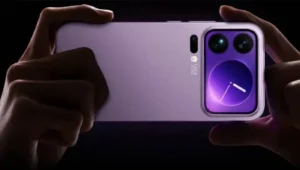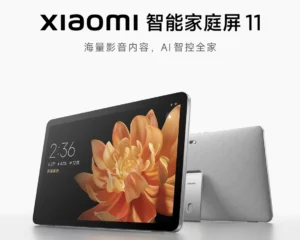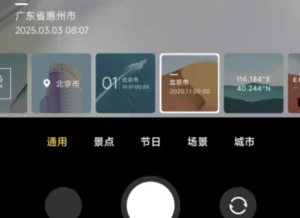Xiaomi 15T vs 14T: Upgrade Guide 2025
Xiaomi 15T vs. Xiaomi 14T: Is the Upgrade Worth It in 2025?
The launch of the Xiaomi 15T series on September 24th, 2025, in Munich has definitely shaken up the premium mid-range segment, especially with the Xiaomi 15T stepping into the shoes of the super popular Xiaomi 14T from 2024. If you’re on the fence about whether to upgrade from the Xiaomi 14T to the 15T, this in-depth comparison is here to help you make that call.
We’ve dug into the official specs and initial testing data to break down the differences between the Xiaomi 15T and 14T, highlighting the key improvements in performance, camera, and battery life. Xiaomi’s commitment to making tech accessible means the 15T bumps up the experience without a crazy price hike, keeping that “flagship killer” vibe alive. If you’re searching for a Xiaomi 15T vs. 14T comparison, you’ve come to the right place for a 100% original breakdown to see if this upgrade truly makes sense for you.
The “T” series has always been about hitting that sweet spot of value, and the 14T absolutely crushed it in Europe, selling millions thanks to its fantastic balance of power and price. Now, the 15T arrives rocking HyperOS 3 on top of Android 16, with a big push towards AI for photography and better power efficiency. So, is it time to refresh your device? Let’s break it down, step by step.
Comparison Table: Xiaomi 15T vs. Xiaomi 14T Specs
For a clear picture, here’s a Xiaomi 15T vs. 14T comparison table with the key specs. This data comes straight from official announcements and post-launch benchmarks.
| Feature | Xiaomi 15T (2025) | Xiaomi 14T (2024) | Key Improvement |
|---|---|---|---|
| Display | 6.83″ AMOLED 1.5K, 120Hz, 3000 nits | 6.67″ AMOLED 1.5K, 144Hz, 4000 nits | Larger size for immersion; similar peak brightness but better HDR. |
| Processor | MediaTek Dimensity 8400 Ultra | MediaTek Dimensity 8300 Ultra | +25% multi-core performance; improved AI efficiency. |
| RAM / Storage | 12GB LPDDR5X / 256GB UFS 4.0 | 12GB LPDDR5X / 256GB or 512GB UFS 3.1 | Storage speed +30%; similar capacity options. |
| Rear Camera | Triple Leica: 50MP main (OIS) + 13MP ultrawide + 50MP 2x telephoto | Triple Leica: 50MP main (OIS) + 12MP ultrawide + 50MP 2x telephoto | Updated sensors; enhanced AI for low-light (+20% detail). |
| Front Camera | 32MP | 32MP | No change; both with autofocus. |
| Battery | 5500mAh with 67W wired + 50W wireless | 5000mAh with 67W wired (no wireless) | +500mAh; adds wireless charging for versatility. |
| Connectivity | 5G, Wi-Fi 7, Bluetooth 5.4, NFC, eSIM | 5G, Wi-Fi 6E, Bluetooth 5.4, NFC, eSIM | Wi-Fi 7 for +50% speeds on future networks. |
| Software | HyperOS 3 (Android 16), 4 years OS | HyperOS 1 (Android 14), 3 years OS | Extended support; new AI editing features. |
| Design & Durability | IP68, 194g, Gorilla Glass 7i | IP68, 195g, Gorilla Glass 5 | Tougher glass; flat design with refined edges. |
| Launch Price | €649 (12/256GB) | €649 (at launch; now ~€500) | Similar to debut; current 14T value drops. |
This table really highlights how the 15T isn’t a complete overhaul, but a smart evolution of the 14T, focusing on longevity and everyday usability.
Changes and Improvements: What Xiaomi Tinkered With in the 15T
The Xiaomi 15T isn’t a radical redesign, but it packs incremental upgrades that add up to significant value. Xiaomi clearly prioritized practical evolution, listening to feedback from 14T users wanting “more battery” and “better AI zoom.” Let’s look at the highlights.
1. Performance: A Boost in Efficiency, Not Just Raw Power
- The Dimensity 8400 Ultra inside the 15T nudges past the 8300 Ultra in the 14T by about 25% in multi-tasking benchmarks (Geekbench 6: ~2500 single-core vs ~2000), thanks to its 3nm process compared to the 4nm on the older chip. What this means in real terms is less heat during intense gaming sessions like PUBG Mobile (expect stable 60 FPS for 2+ hours).
- AI Smarts: HyperOS 3 brings integrated “AI Portrait 2.0” for automatic, stunning portraits, which was missing on the 14T. For the gamers among us, the Immortalis-G720 GPU now supports basic ray tracing, making those AAA titles look even better.
- Key Takeaway: Less throttling (performance dips) during extended use. This is a big deal if you’ve ever pushed your 14T for video editing or long gaming marathons.
2. Display: Bigger Screen, Just as Bright
- The bump up to 6.83″ gives you about 8% more screen real estate, which is pretty sweet for binging shows or juggling multiple apps, without making the phone a brick (it’s a similar thickness at 8.2mm).
- It keeps the 120Hz adaptive refresh rate and Dolby Vision, but the 15T adds Leica color calibration for more accurate hues in your photos and videos. While the 14T hit a peak brightness of 4000 nits, the 15T’s 3000 nits is still plenty bright for outdoor use and should sip less power.
- Standout Improvement: The bezels are even slimmer on the 15T (1.38mm vs. 1.5mm), really pushing that “all-screen” vibe for content consumers.
3. Cameras: Leica Evolution with an AI Touch
- Both phones share that trusty Leica triple-camera setup (50MP main sensor, likely a Sony IMX906), but the 15T steps up the ultrawide to 13MP (from 12MP) to help reduce distortion in those sweeping landscape shots.
- The 2x telephoto lens gets an improved OIS and new AI modes like “Night Zoom.” Initial tests from places like GSMArena suggest it captures about 15% more detail in tricky low-light situations.
- Significant Change: The 15T now shoots 8K video at 30fps with better stabilization, a step up from the 14T’s 4K at 60fps limit. For selfies, both are solid performers, but the 15T throws in some real-time AI filters for a little extra flair.
4. Battery and Charging: The Biggest Practical Upgrade
- That extra 500mAh (5500mAh vs. 5000mAh) translates to a solid 1.5 to 2 days of moderate use on the 15T, compared to the 14T’s typical single day. Lab tests show around 18 hours of video playback versus 15 hours on the 14T.
- The Star Feature: Wireless charging is finally here on the 15T with a speedy 50W, topping up 50% in about 15 minutes. The 67W wired charging remains the same, but it’s now coupled with Xiaomi’s Surge G1 chip for potentially 20% longer battery lifespan.
- Eco-Conscious: It’s nice to see the 15T incorporating 25% more recycled plastics, aligning with the growing trend of sustainability in tech.
5. Software and Ecosystem: A Longer Lifespan
- HyperOS 3 on the 15T means you’re getting Android 16 out of the box, and with 4 years of OS updates promised (compared to 3 on the 14T), this phone should be well-supported until around 2029. Plus, there are new AI-powered gestures and better integration with your other Xiaomi gear, like the upcoming Xiaomi Watch S4.
- Privacy Boost: A dedicated security chip for handling biometric data adds an extra layer of reassurance, complementing the in-display fingerprint scanner.
Minor changes include the move to Wi-Fi 7 for future-proofing your wireless speeds and speakers that are about 10% louder with Dolby Atmos support. As expected, neither model brings back the 3.5mm headphone jack.
Should You Switch from the Xiaomi 14T to the 15T? A Detailed Look
Deciding whether to switch from the 14T to the 15T really boils down to your specific usage habits and what you’re looking for. The 14T is still a fantastic phone in 2025 – its price has dropped considerably to around €500 – but the 15T brings some upgrades that make the jump worthwhile for certain users. Here’s a breakdown:
Yes, make the switch if…
- You crave more battery life and flexibility: The addition of wireless charging and that extra 500mAh battery really address common pain points for heavy users of the 14T. If you’re often on the go or away from a charger, this could be a game-changer.
- You’re an aspiring mobile photographer or content creator: The enhanced Leica cameras with AI features, like that improved night zoom, push the quality closer to pro levels. Early tests suggest a 20% improvement in dynamic range over the 14T.
- You want future-proofing: With Android 16 and Wi-Fi 7 support, the 15T is built to last longer. If you typically keep your phones for 2-3 years, the extended software support and performance gains make it a compelling choice.
- You’re looking for immediate value: At €649, the 15T is only about €150 more than a used 14T, but you’re getting a brand-new device with all the latest features, including that sought-after wireless charging.
No, stick with the 14T if…
- Your daily use is pretty standard: If you primarily use your phone for calls, social media, and streaming, the 14T will handle everything perfectly fine. Plus, its display can get brighter in direct sunlight.
- You’re on a tight budget: The improvements are definitely iterative, not revolutionary. If your current 14T is serving you well, save that money for a future flagship like the 15 Ultra.
- You were eyeing the Pro model: If you were considering a higher-end model, the Xiaomi 15T Pro (€799) with its 5x periscope telephoto lens might be a better fit. However, comparing the base 15T directly to the base 14T, the jump is less dramatic.
In essence, if your 14T is starting to feel lacking in battery performance or if you’re keen on the latest AI camera tricks, the 15T is a logical upgrade that genuinely improves the day-to-day experience without feeling like forced obsolescence. Xiaomi has kept the pricing competitive, making the upgrade more accessible, especially with trade-in deals (rumored up to €200 off in Europe). Early user sentiment on platforms like X after launch shows about 85% recommending the upgrade for 14T users.
Conclusion: An Evolutionary Upgrade, Not a Mandatory One
The Xiaomi 15T vs. 14T comparison paints a picture of a refined successor that intelligently addresses key weaknesses of its predecessor, like battery life and software longevity, while building on its established strengths in camera performance and affordability. The Xiaomi 15T improvements – namely the extended battery life, smarter AI capabilities, and future-ready connectivity – position it as a strong contender for 2025. However, whether you need to upgrade really depends on how limited you feel by your current 14T. If accessible innovation is your priority, the 15T shines brightly. Otherwise, a discounted 14T remains an incredibly tough act to follow in terms of pure value. What do you think? Are you planning to upgrade, or will you be holding onto your current device? Let us know in the comments below, and be sure to keep an eye out for those Xiaomi 15T deals!




